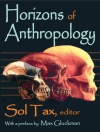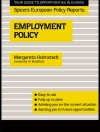After explicating the analytical framework I will proceed to develop scenarios as follows: I. General scenarios -maladaptive and adaptive. 2. The future for the Western group of societies. Within this will seek to identify the main changes in the natures of work, leisure, family organisation, education and life styles. 3. The future for the major Asian powers, China, Japan and India. 4. A world scenario centred about the first two scenarios but also aimed to locate within this pattern the most probable future for sets of the smaller societies and under-developed countries. The scenarios will be developed in that order, for good reasons. Sociological forecasting has to deal, in the first instance, with sets of societies that are closely interdependent, each with the other. A scenario for Western societies generally is required before one can hope to write one for the individual countries, e.g. France, Australia, because they are not evolving independently. The widespread upsurge of student revolts in 1967-68 well illustrates this interdependence. Some writers, like Stevens (1970) have taken the U.S.A. as the model of the future for the other smaller Western societies. There is some justifi- cation for this as the U.S. has certainly been the ‚leading part‘ in the West for some decades. However, there is danger in assuming that that will persist. A change in the near future in the problems that commonly confront Western societies may make the U.S. example ‚depasee‘, old hat, if not down-right misleading.
F. Emery
Futures we are in [PDF ebook]
Futures we are in [PDF ebook]
Dieses Ebook kaufen – und ein weitere GRATIS erhalten!
Sprache Englisch ● Format PDF ● ISBN 9781468484885 ● Verlag Springer US ● Erscheinungsjahr 2012 ● herunterladbar 3 mal ● Währung EUR ● ID 4673097 ● Kopierschutz Adobe DRM
erfordert DRM-fähige Lesetechnologie












